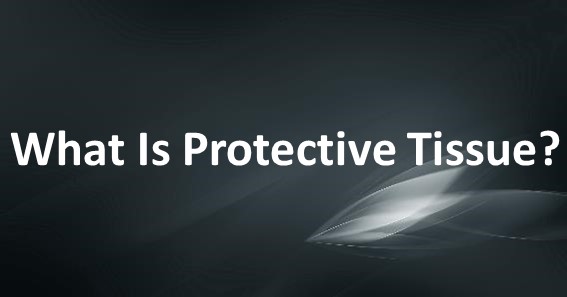Are you curious to know what is protective tissue? You have come to the right place as I am going to tell you everything about protective tissue in a very simple explanation. Without further discussion let’s begin to know what is protective tissue?
Plants are remarkable organisms that have evolved various adaptations to thrive in diverse environments. One of the crucial adaptations is the presence of protective tissue, which plays a vital role in safeguarding plants against external stresses and promoting their overall health and survival. In this blog post, we will delve into the concept of protective tissue in plants, its types, functions, and the importance of its role in plant physiology.
What Is Protective Tissue?
Protective tissue, also known as protective coverings or tissues, refers to specialized cells and tissues found in plants that provide a shield against physical, chemical, and biological factors. These tissues are strategically located on the surface or within different plant organs to offer protection, regulate gas exchange, reduce water loss, and defend against pathogens or herbivores.
Types Of Protective Tissue:
- Epidermis: The epidermis is the outermost layer of cells that covers the aerial parts of plants, including leaves, stems, and young roots. It serves as a protective barrier against water loss, mechanical damage, and pathogen invasion. The epidermal cells may also secrete waxy substances, such as cuticle, to further reduce water loss and prevent desiccation.
- Periderm: In woody plants, the periderm replaces the epidermis as the protective tissue in older stems and roots. It consists of cork cells, cork cambium, and phelloderm. The periderm provides protection against physical damage, pathogens, and water loss, and contributes to the formation of bark.
- Trichomes: Trichomes are hair-like outgrowths found on the epidermis of many plants. They can serve various protective functions, including reducing water loss by creating a microclimate around the leaf surface, reflecting excess sunlight to prevent overheating, and deterring herbivores by producing toxic compounds or providing physical barriers.
Functions And Significance Of Protective Tissue:
- Protection against Water Loss: The protective tissues, such as the epidermis and cuticle, form a waterproof barrier that minimizes water loss through evaporation. This adaptation is particularly crucial in terrestrial plants to prevent desiccation and maintain water balance.
- Defense against Pathogens and Herbivores: The protective tissue acts as the first line of defense against pathogens, preventing their entry into the plant. The epidermis may produce antimicrobial compounds, while trichomes and specialized cells can deter herbivores through physical barriers, chemical toxins, or sticky secretions.
- Regulation of Gas Exchange: Protective tissues, especially the stomata present in the epidermis, facilitate the exchange of gases, such as oxygen and carbon dioxide, between the plant and its environment. Stomata also regulate water vapor loss during transpiration.
- Mechanical Support: The presence of protective tissues, including the epidermis and periderm, provides structural support to the plant, protecting it from mechanical injuries caused by external forces like wind, rain, or physical contact.
- Environmental Adaptations: Different types of protective tissue enable plants to adapt to various environmental conditions. For example, trichomes can help reduce leaf temperature and prevent excessive water loss in arid environments, while thickened periderm in woody plants protects against freezing temperatures and physical damage.
Conclusion:
Protective tissue plays a vital role in the survival and well-being of plants by providing a range of functions, including protection against water loss, pathogens, herbivores, and environmental stresses. The presence of specialized tissues, such as the epidermis, periderm, and trichomes, ensures that plants can thrive in diverse habitats and respond effectively to their surroundings. Understanding the significance of protective tissue helps us appreciate the remarkable adaptations of plants and highlights the intricate balance between protection and growth in the plant kingdom.
FAQ
What Is Called Protective Tissue?
The epidermis (outer most layer) is the first layer of the plant body that acts as the first line of defense against various types of harmful objects. It protects the other parts of the body from injuries, bacterial attacks etc. Therefore epidermis is known as a protective tissue.
What Are The Protective Tissues In Plants Class 7?
Complete answer: The protective tissues in plants consist of epidermis and cork (phellem). > Epidermis: It is the outer covering of cells in plants.
What Is Protective Tissue Examples?
Cork is the protective tissue in the plants.
What Are The Protective Tissues In Humans?
Epithelial tissues form the outer covering all over the body, it functions as a protective tissue. It develops a barrier to separating different systems of the body. The lining of the mouth, the skin, lung alveoli, the lining of the blood vessels, and kidney tubules are all formed of epithelial tissues.
I Have Covered All The Following Queries And Topics In The Above Article
What Is The Function Of Protective Tissue
What Is A Protective Tissue
What Is Protective Tissue In Plants
What Is Protective Tissue Class 9
What Is Protective Tissue Class 7
Examples Of Protective Tissue
Protective Tissue In Plants Class 9
Types Of Protective Tissue In Plants
Function Of Protective Tissue In Plants
Protective Tissue In Animal’s
What Is Protective Tissue
What is protective tissue and supporting tissue
What is a protective tissue in a plant?
